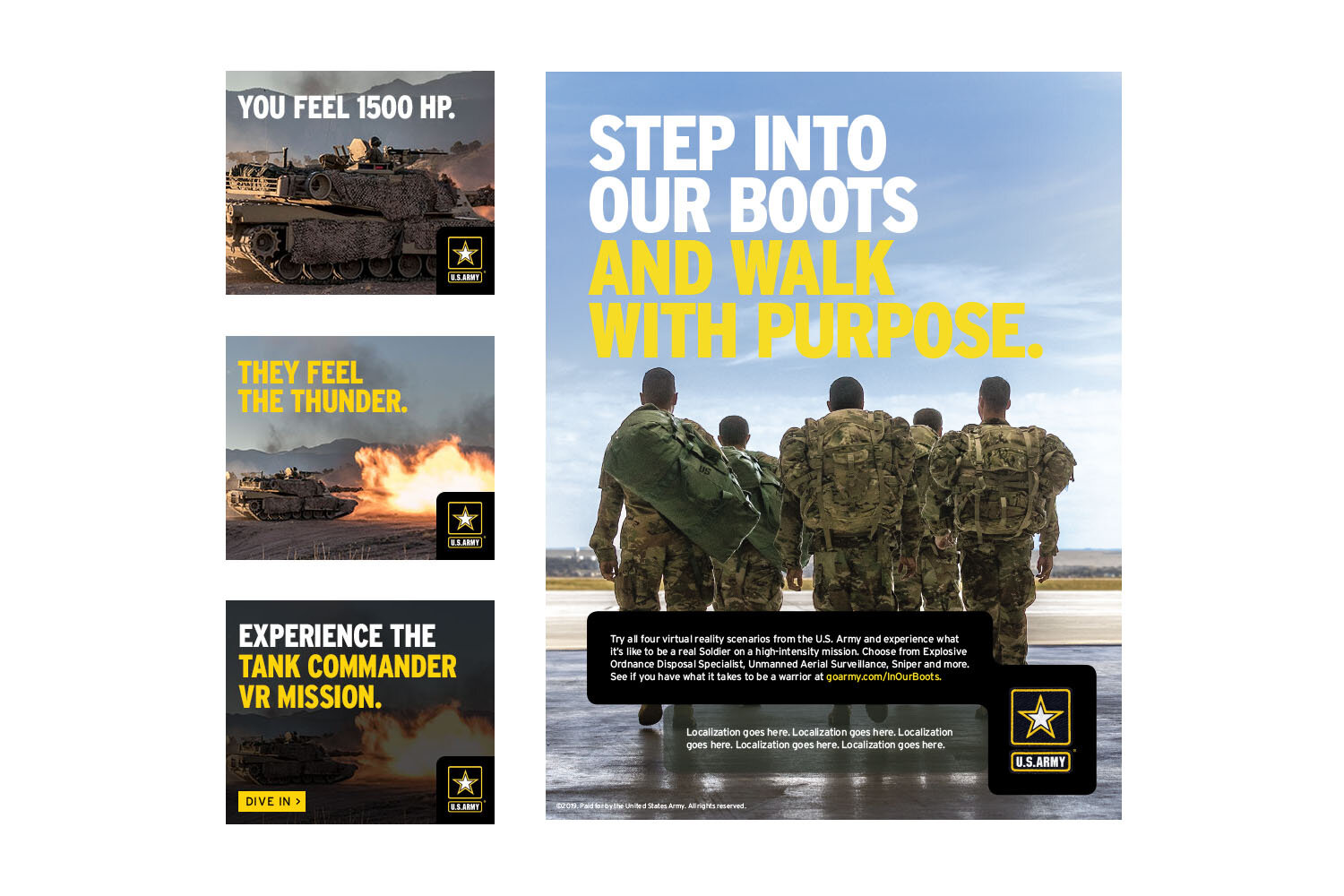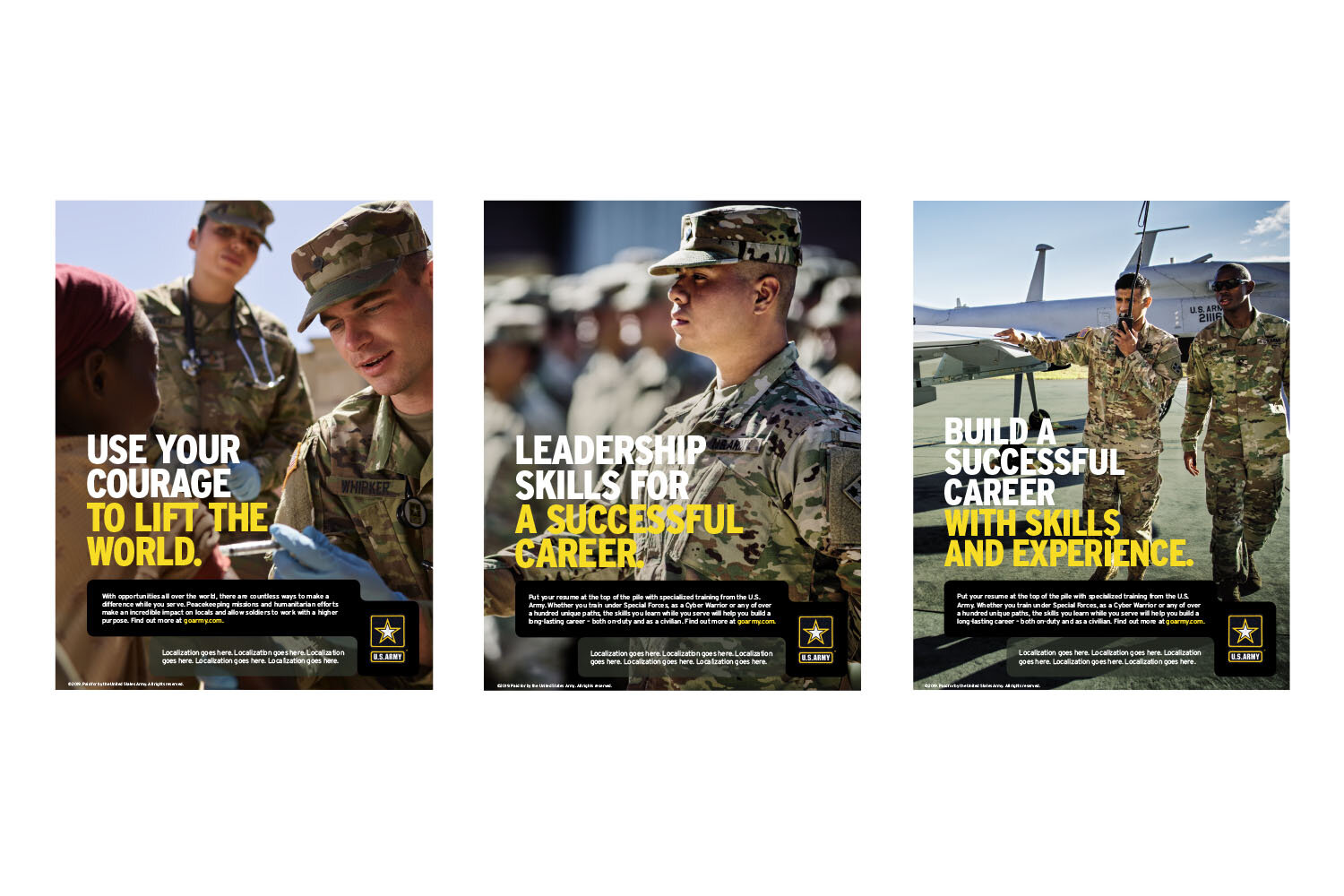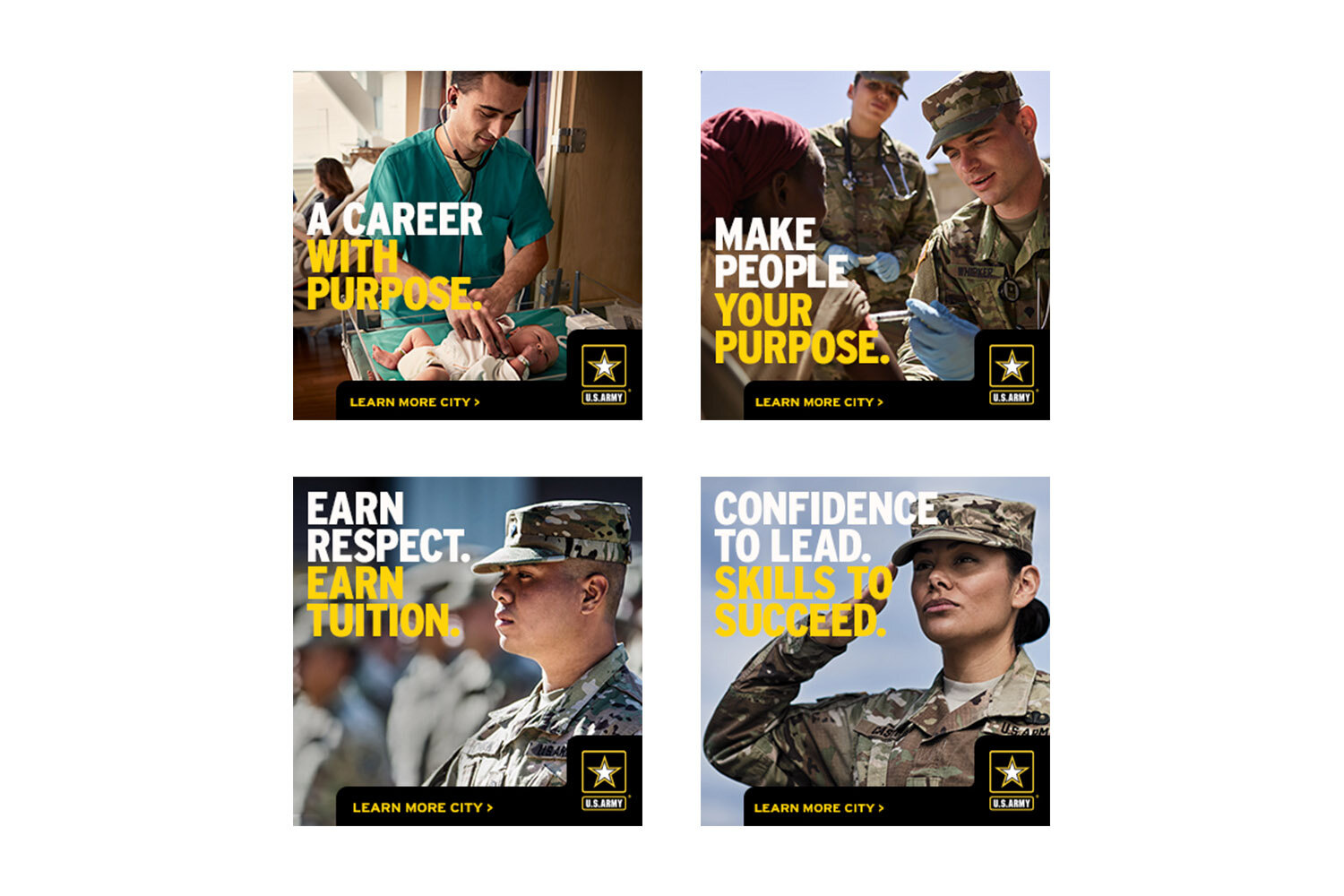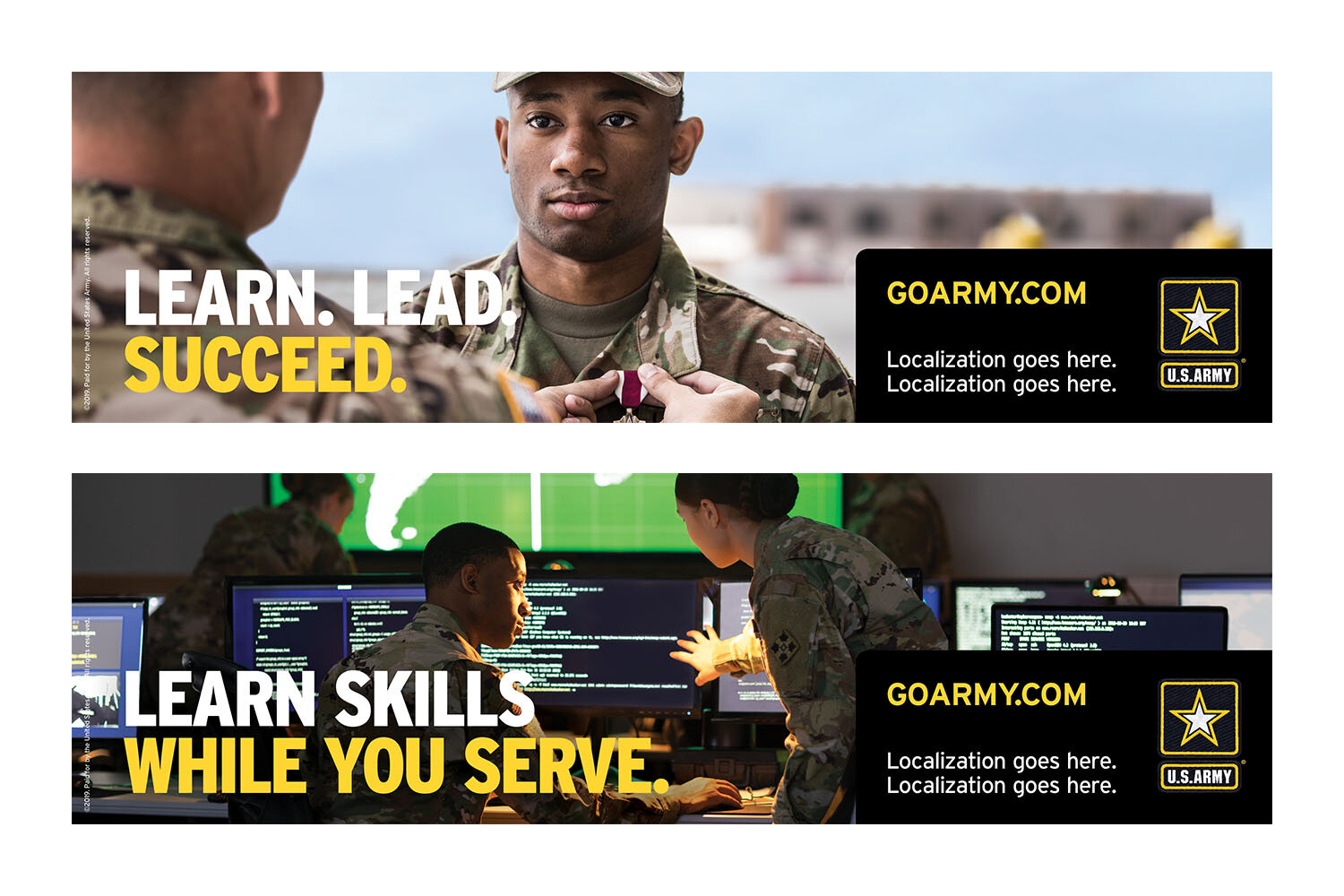




How to manage creativity within brand guidelines
The US Army is a well-organized client, with a very strongly defined look, very specific guidelines and a large library of existing assets.
The first challenge is to find just the right existing image that captures the message in just the right way; and it has to be the right generation of camo pattern and the right mix of rank. The second challenge required a lot of retouching magic to get that one image to work across digital, print and outdoor platforms.
